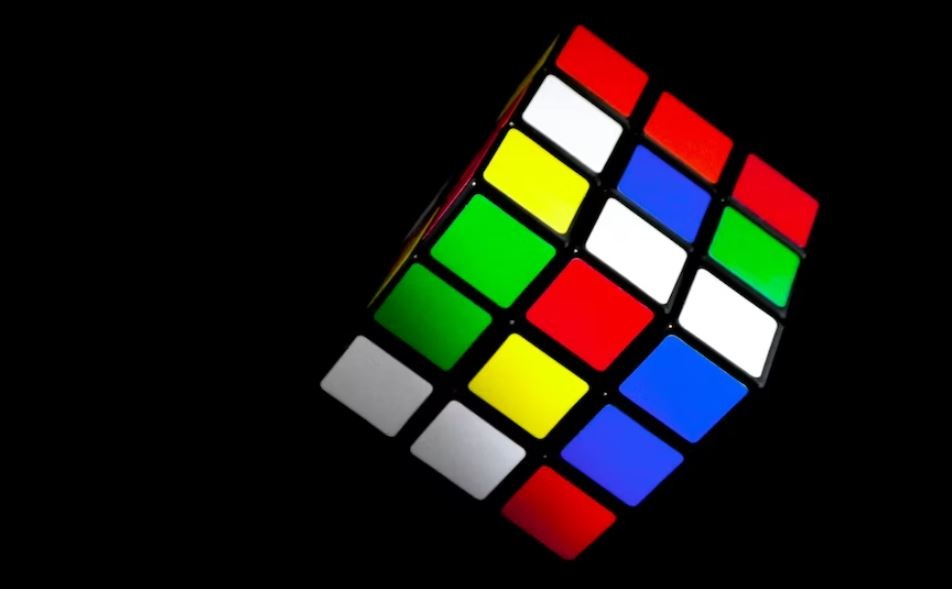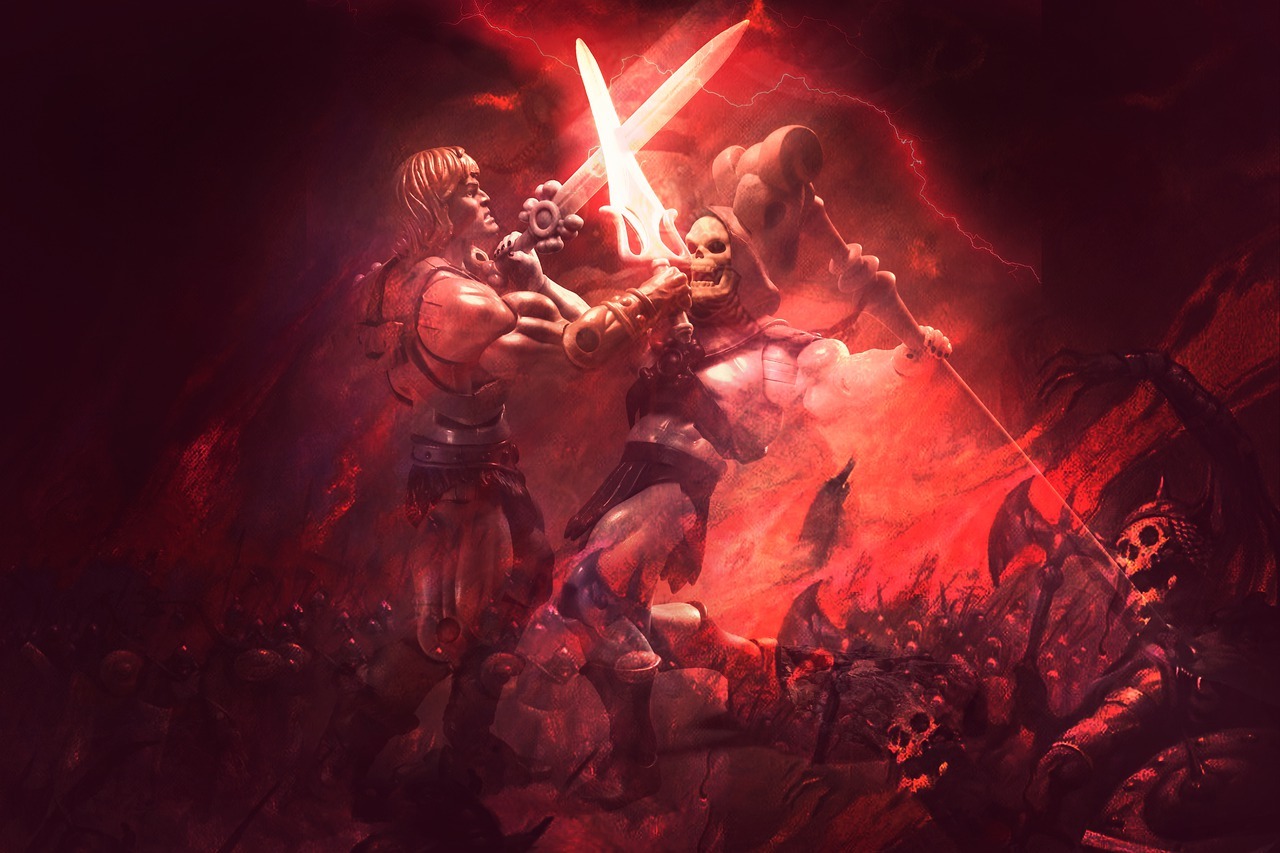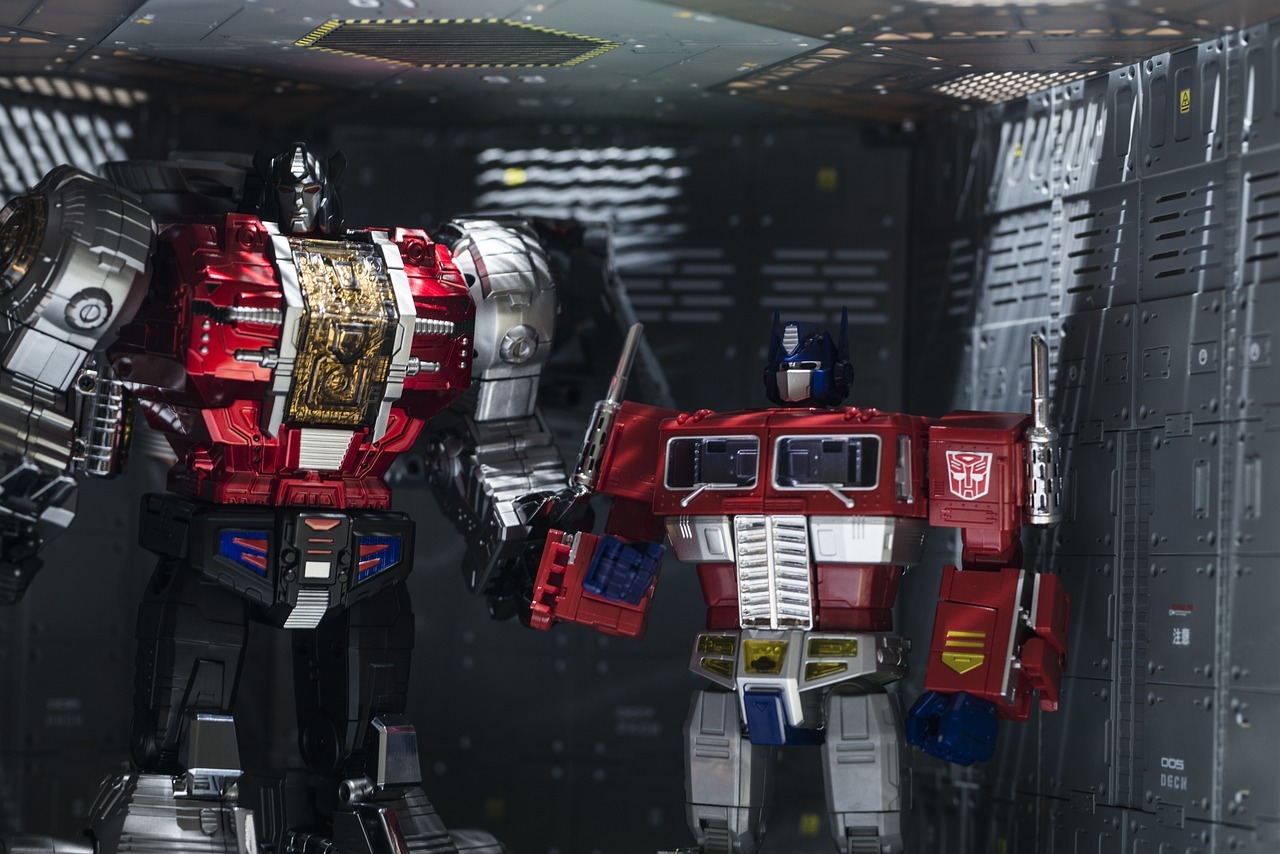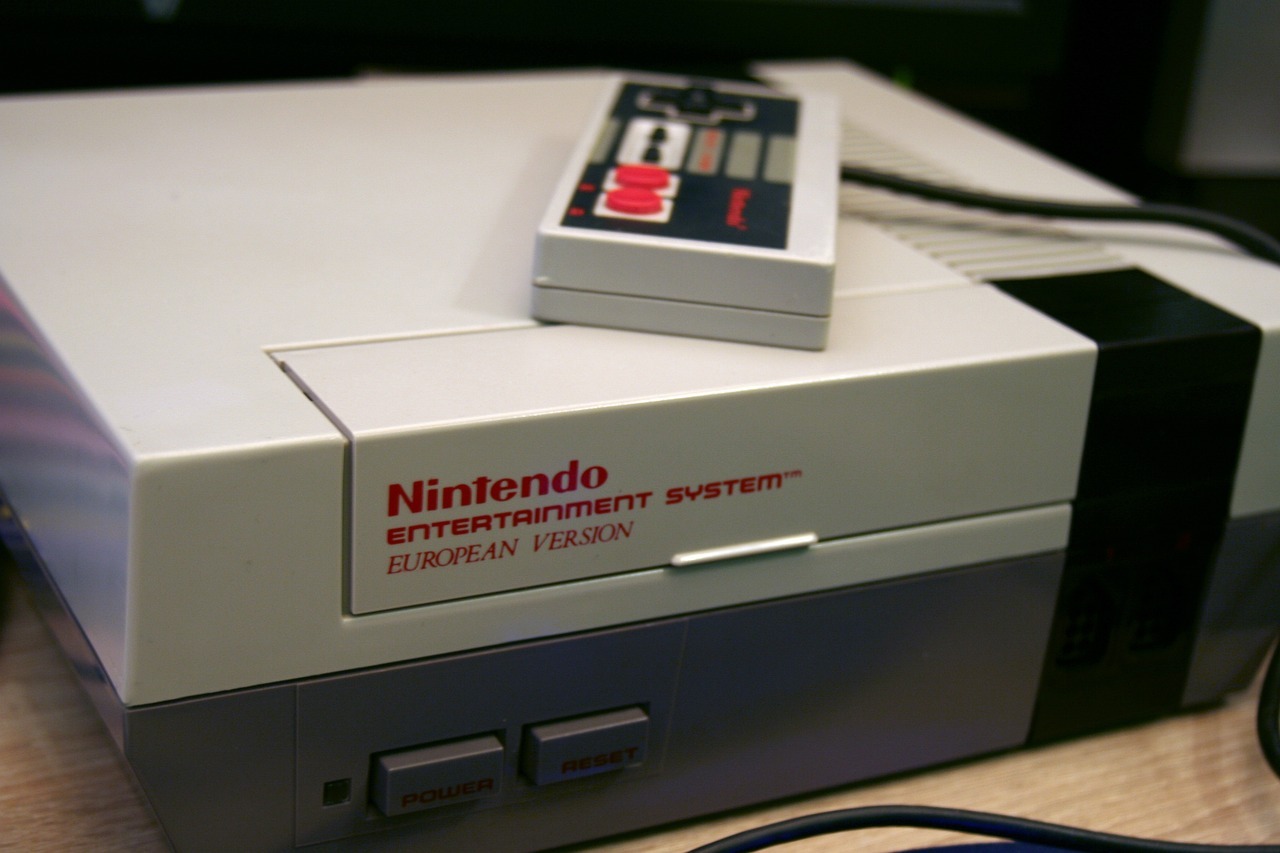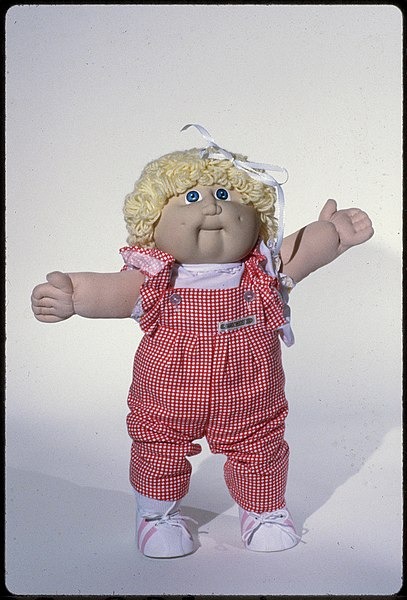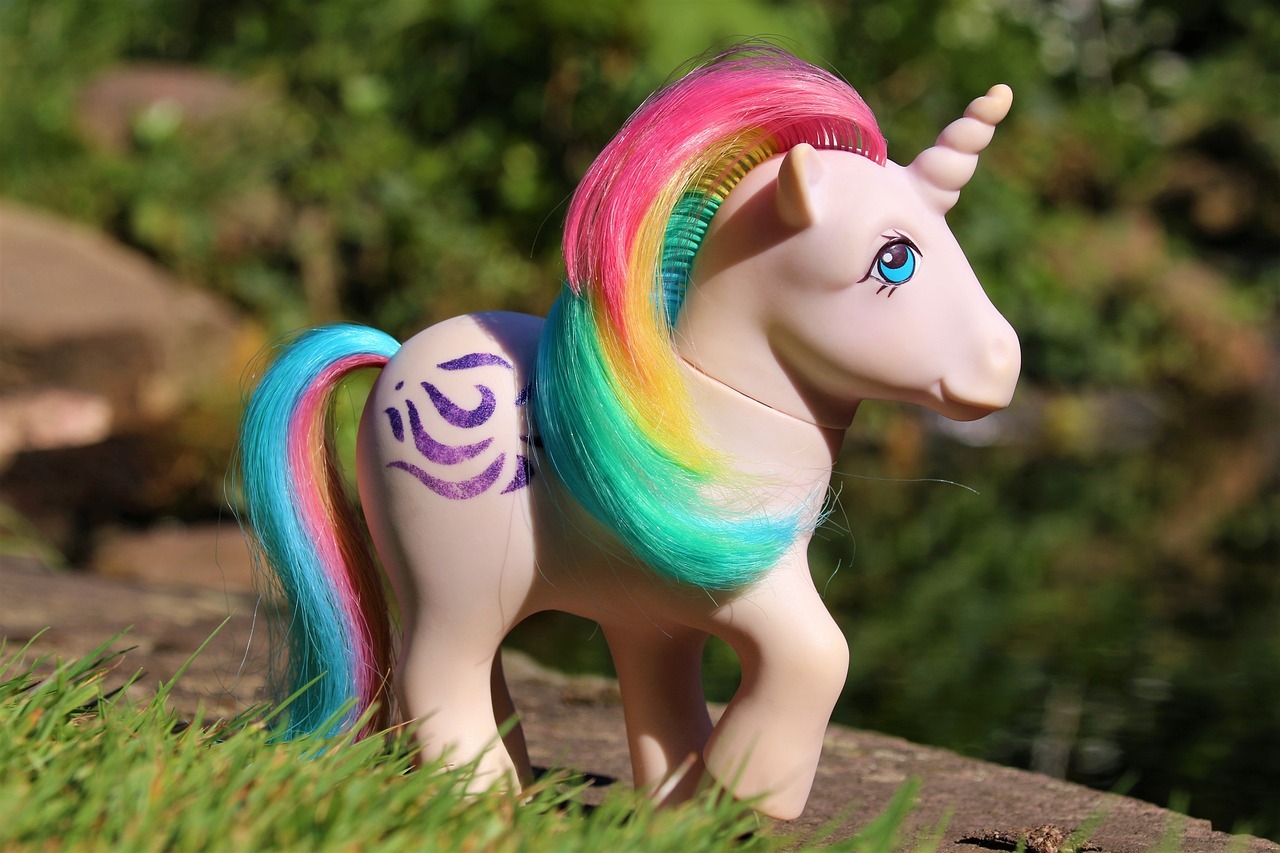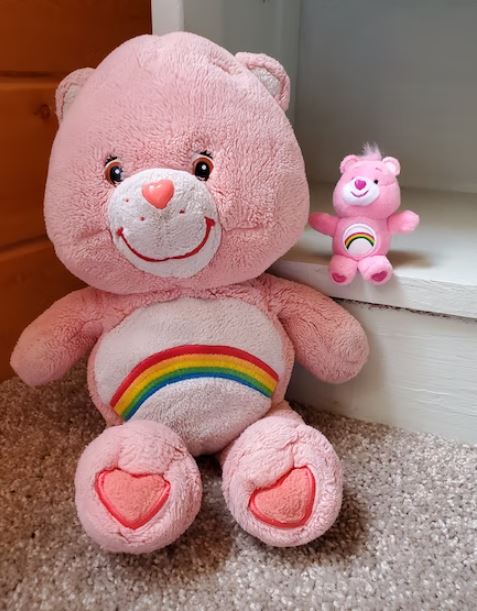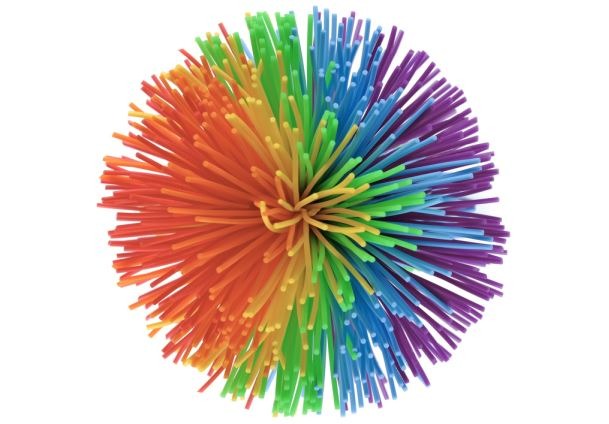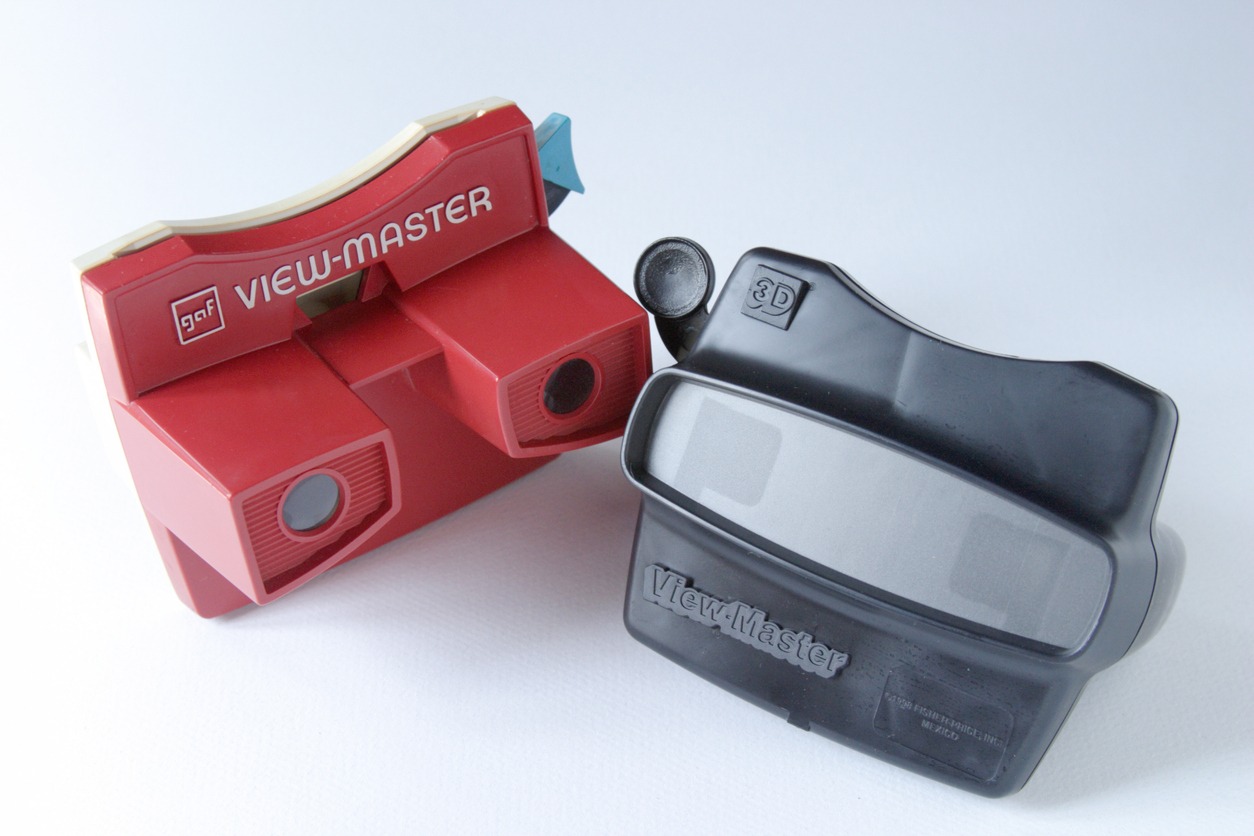The 80s is the era of blockbuster movies and the emergence of popular TV networks like MTV, which was impactful to the entire music industry because it provided people with easy access to music videos starring popular music artists and bands. It was also in the 80s when some of the coolest toys were introduced to the world. To know more, here are the top pop culture toys of the 80s.
Masters of the Universe
One of the most successful media franchises that have come out of the 1980s is Masters of the Universe, which is often referred to as the He-Man or the She-Ra series. Masters of the Universe has a sword and planet theme, a popular theme in science fiction where otherworldly planets depict heroes, villains, and other characters in the story as sword-wielding people in an environment that is more prehistoric or medieval-like in nature instead of being technologically advanced.
In Masters of the Universe, the main protagonist is Prince Adam, who can transform into his alter ego He-Man that has superhuman strength. The archnemesis of He-Man is Skeletor, a menacing blue-skinned foe with a skull face.
Masters of the Universe was already developed by Mattel, a toy manufacturing company that is also responsible for producing and popularizing Barbie dolls, during the late 1970s. The story and the characters of Masters of the Universe were inspired by Conan the Barbarian, another sword-and-planet-themed franchise that was created in the 1930s and became a hit in the 1970s and early 1980s.
The creation of Masters of the Universe is connected to how Mattel declined to produce action figures for the Star Wars film in 1976. This decision would turn out to be a mistake, as Kenner, the company that got the license for the Star Wars figures, would go on to become one of the highest-profiting companies in the late 70s and early 80s simply because of the success of the Star Wars franchise.
Mattel would then try to find ideas that can become the next hit toy line. According to some reports, it was Roger Sweet, the lead designer of Mattel’s Preliminary Design Department, who created the design for He-Man. However, there were also reports stating that Mark Taylor, the company’s packaging designer, created the first design for He-Man. [1] Taylor would call the character he designed “Torak.” Regardless of who created the He-Man character, it was still Mattel that benefited from the huge success of He-Man and other Masters of the Universe figures.
The success of Masters of the Universe allowed Mattel and partner media companies to create books, comics, magazines, films, and animated TV shows from the 1980s up to the present day. If you want to get figures that are close in design to the first generation of Masters of the Universe figures, you can check out the products below:
- Masters of the Universe Origins He-Man Action Figure
- Masters of the Universe Origins Skeletor Action Figure
- Masters of the Universe Origins Stridor Action Figure
Transformers
Another very popular franchise that was created in the 1980s is Transformers, which features robots that can transform from cars, animals, and objects to humanoids. Transformers were created through the collaboration between American toy company Hasbro and Japanese toy manufacturer Takara (who merged with Tomy in 2006 to form Takara Tomy).
The idea for Transformers came to be when representatives of Hasbro went to a toy expo in Japan called Tokyo Toy Show in 1983. The goal of the representatives was to find different toys that they can import to the North American market. It was at the toy expo that they met the representatives of Takara, who were showcasing transforming robot toys from various toy lines like Micro Change (also known as Microman in Japan) and Diaclone (a toy line launched in 1980). [2]
Fascinated with the transforming robot toys, Hasbro agreed to import and release the toys in North America, although the company decided to just sell the toys under one brand to avoid confusion. The brand name they decided on was “Transformers,” and the first toys for the brand were released in 1984.
Transformers would become one of the best-selling toy lines not only in the 1980s but also in the succeeding time periods and the present era. In 2011, it was estimated that the franchise was able to generate about $25 million in revenue.
Transformers are divided into different generations, and the one created in the 80s was Generation 1. Today, you can still buy plenty of Generation 1 Transformers figures, although most of what you can buy currently are reissues. The figures that were originally released in the 80s have high resale value due to the popularity of the franchise.
Here are three of the best Generation 1 reissue Transformers figures that you can buy online:
- Transformers G1 Autobot Bumblebee Action Figure
- Transformers G1 Autobot Blaster Action Figure
- Transformers G1 Decepticon Triple Changer Astrotrain
Nintendo Entertainment System (NES)
The game console that saved the video game industry during the 1980s was the Nintendo Entertainment System, also known by its acronym NES. The NES was an 8-bit video game console that was produced by Nintendo and was first released in Japan in 1983 under a different name (Family Computer or Famicom). The Famicom had a different design from the NES we know today, as it featured red, white, and gold colors and has a smaller console size compared to the NES. The redesigned version of the Famicom, which was called the NES, would be released in North America on October 18, 1985.
The NES was instrumental in saving the video game industry after the video game crash of 1983, wherein a large-scale recession in the industry occurred due to low sales of consoles and video games in the United States. The low sales within the industry were caused by the market saturation of video game consoles and the poor quality of video games during that period.
Fortunately, when the NES arrived in North America, the console already had some of the best video games in that era, including Duck Hunt, Excitebike, and Super Mario Bros. The great games that can be played on the NES restored the people’s interest in video games, and thus the video game industry was saved. By the end of the NES’s lifespan, Nintendo was able to sell more than 60 million units of the console. [3]
While the NES has been discontinued a long time ago, you can play the games for the said console through the Nintendo Switch Online program, which is a monthly subscription service that offers online services for players while also enabling them to play retro games from the NES, the SNES (Super Nintendo Entertainment System), the Game Boy, and other older consoles from Nintendo’s catalog to the Nintendo Switch. You can buy a 12-Month Membership Card and a SanDisk 128GB MicroSDXC Memory Card online. If you want, you can use the MicroSD card to save game data and save files created in your Nintendo Switch console.
Cabbage Patch Kids
Girls in the 80s were also able to enjoy new and fun toys, and one of the toys that was designed for them was the Cabbage Patch Kids. The Cabbage Patch Kids are dolls that have a cloth torso and plastic legs, arms, and heads. These dolls can have customizable outfits, so girls will be able to dress their own dolls to make them look unique or one of a kind. The Cabbage Patch Kids were inspired by another doll line called “Little People,” which was designed and sold by a toy designer named Xavier Roberts.
The origins of the Cabbage Patch Kids can be traced to the 1970s when Xavier Roberts was inspired to create “Little People” when he saw a line of dolls called “Doll Babies” that was created by craft artist Martha Nelson. These “Doll Babies” came with adoption papers and a birth certificate. [4]
The “Little People” were then sold at arts and craft shows, and after the dolls gained popularity, Roberts was approached by a licensing agent and designer named Roger L. Schlaifer about licensing the dolls. Because the name “Little People” was already owned by Fisher-Price (another toy company in the US), Roberts and Schlaifer changed the name of the doll line to “Cabbage Kids.”
Roberts and Schailfer then formed a partnership with Coleco, an American toy company that has manufacturing factories in China, to produce affordable Cabbage Kids dolls. The first batch of Cabbage Kids dolls was sold in 1982, and by 1984, Coleco was able to generate about $2 billion in retail sales thanks to the popularity of the dolls in North America, Europe, New Zealand, Australia, and Japan.
The license of producing and selling Cabbage Kids, which would eventually be called Cabbage Patch Kids, would be bought and sold by numerous companies over the years, including Hasbro (1988 to 1994), Mattel (1994 to 2003), and a toy store called Toys “R” Us (2003). As of 2023, the owner of the license for the Cabbage Patch Kids is Wicked Cool Toys, which is owned by an investment holding company called Alleghany Corporation.
Check out these two products that are based on the classic look of the Cabbage Patch Kids:
- Cabbage Patch Kids Vintage Kids Adoptable Baby Doll – Blonde/Blue Eyes
- Cabbage Patch Kids Collector’s Edition Adoptable Baby Doll – Brunette/Brown Eyes
Rubik’s Cube
In terms of puzzles and mind-bending toys, Rubik’s Cube is arguably one of the most popular toys that have become quite popular in the 1980s and is still very popular today. The Rubik’s Cube was invented by Ernő Rubik, a Hungarian professor of architecture and a sculptor. [5] During the mid-70s, Rubik worked at the Academy of Applied Arts and Crafts Department of Interior Design in Budapest.
While working in the said academy, Rubik created a cube that has rotating pieces that are also cubed in shape. The cube was supposed to help his students have a better understanding of 3D objects. However, when he started scrambling and rotating numerous parts of the cube, he realized that putting the pieces back into place can be challenging. This was how a classic puzzle was born
Rubik would then apply for a patent for a “Magic Cube” on January 30, 1975. The first ten units of the Magic Cube were released in 1977 and were sold in toy shops around Budapest. Tibor Laczi, a toy seller and businessman, would later bring a Magic Cube to the Nuremberg Toy Fair in Germany in 1979 with the permission of Rubik. At the fair, the Magic Cube would be noticed by Tom Kremer, the owner of a toy company called Seven Towns.
Kremer and Laczi then formed a partnership alongside another toy company called Ideal Toys to release the Magic Cube in different countries around the world. In order to make the product more marketable, Ideal Toys named the cube after its inventor, and thus the toy was named “Rubik’s Cube.”
The first batches of Rubik’s Cube were sold worldwide in May 1980. While the sales of the product were decent during the first months of production, Ideal Toys wanted it to sell more, so they launched an advertising campaign that caught the attention of kids and teenagers in various countries.
By 1981, the Rubik’s Cube became a craze, and many people were competing on who would be able to solve the toy’s puzzle in the fastest time. In March 1981, a speedcubing tournament was held in Munich and was organized by the Guinness Book of World Records. This specific tournament would give rise to many speed-cubing competitions around the globe. If you haven’t played with a Rubik’s Cube yet, then now may be the best time for you to try The Original 3×3 Rubik’s Cube.
My Little Pony
My Little Pony is a popular toy line and media franchise that was developed in 1981 and is currently produced and sold by Hasbro. The toys in My Little Pony are plastic ponies that have colorful bodies and manes that can be combed and colored. These pony toys would usually have a unique symbol on their stomach or on their sides.
My Little Pony, which was first known as “My Pretty Pony” in 1981, was the creation of sculptor Charles Muenchinger and illustrator Bonnie Zacherle, who were working for Hasbro during the 1980s. [6] In its first iteration, My Pretty Pony is a hard plastic figurine that is ten inches tall and has movable ears and a tail, as well as one eye that can wink. My Pretty Pony would later be improved with the release of My Pretty Pony and Beautiful Baby, which still featured the ten-inch figure but was accompanied by a smaller pony figure. The yellow and pink versions of My Pretty Pony would be introduced later on, and these two versions featured a unique symbol on their backsides. These two versions, as well as their signature symbols, would later become staples of the toy line.
In 1982, Hasbro would introduce the “My Little Pony” toy line which is supposed to have smaller versions of the toys in My Pretty Pony. However, the toys in My Little Pony would become much more popular than the ones in My Pretty Pony, so Hasbro decided to make My Little Pony to be the main product line for their plastic pony figures.
The first generation of My Little Pony would be produced and sold from 1982 to 1992. But, if you want to get figures that are similar in design to the first generation of My Little Pony toys, then you can purchase the ones listed below:
- My Little Pony Retro Rainbow Ponies Twilight Sparkle
- My Little Pony Retro Rainbow Ponies Fluttershy
- My Little Pony Classic Pony Lickety-Split
Care Bears
Care Bears are teddy bears that come in different colors and are originally created by artist Elena Kucharik. [7] These Care Bears are characters featured in various greeting cards printed and sold by the American Greetings Corporation, the second-largest greeting card producer and seller behind Hallmark Cards. Besides having different colors for fur, the Care Bears would also have an image or symbol on their stomach that represents their personalities.
The greeting cards that featured the Care Bears were first printed and sold in 1981. When the Care Bears were proven to be popular among those that buy greeting cards, the American Greetings Corporation saw it as an opportunity to make the Care Bears a line of stuffed toys that they can sell. In September 1982, the Care Bears franchise was launched in New York City, and the launch featured teddy bears that are designed and manufactured by the Parker Brothers (an American toy company) and Kenner.
Care Bears would go on to become one of the best-selling toy franchises in the 1980s. During the peak of the Care Bears’ popularity, there were numerous TV shows and movies that were produced and released, including The Care Bears Movie (1985), Care Bears Movie II: A New Generation (1986), and the original Care Bears TV series in 1985. Stuffed toys of Care Bears characters are still being produced and sold as of 2023, and there have been a few movies and shows about the Care Bears that have come out in recent years.
Here are three Care Bears products that you can buy online and give as a gift to your loved ones:
- Care Bears Cheer Bear Stuffed Animal
- Care Bears Share Bear Bean Plush
- Care Bears Wish Bear Stuffed Animal
Lite-Brite
Lite-Brite is an interesting toy that was originally marketed in the late 1960s but only became very popular in the 1980s. The Lite-Brite toy is basically a light box where you can put small plastic pegs in different colors on the box’s surface. Then, there is a light at the back of the box that will illuminate whatever artwork or text you created on the surface using the small plastic pegs. So, the Lite-Brite can be used as either a toy that kids can create art on or as a display piece in the living room or other areas of the house.
Lite-Brite was invented in the 1960s by Joseph M. Burck, Burt Meyer, and Dalia Verbickas, who were all designers for the Chicago-based toy and design company called Marvin Glass and Associates. The invention was then licensed to Hasbro, which is already considered one of the biggest toy companies back then. Meyer led the project for creating the Lite-Brite, Verbickas was the one responsible for the idea of using translucent material for the box’s front, and Burck was the creator of the toy’s overall design. The Lite-Brite toy was released by Hasbro in 1967. [8]
Today, you will still be able to buy different variants of Lite-Brite toys, including the ones that feature collaborations with popular brands, TV shows, or movies. Here are a few Lite-Brite toys that you should check online:
Micro Machines
Micro Machines is a toy line that consists of mini cars and mini playsets. This toy line was created by a toy company called Galoob in 1986 as a competitor to other mini-car toy lines like Hot Wheels and Matchbox.
One of the most popular advertising campaigns for toys in the 1980s was for Micro Machines, and the campaign included an actor named John Moschitta Jr., who is widely known for having a rapid speech delivery that he often uses in commercials. Because of how many Micro Machines commercials he has been involved in in the 1980s, John Moschitta Jr. became known as “The Micro Machines Man.” [9]
Micro Machines have been revived numerous times, with the most recent revival being the one that was launched at the 2020 New York Fair. The revival included new sublines within the brand like Muscle Cars, Racing, Construction, Farm, and Off-Road. Moreover, the revival also launched collaborations with other franchises, the most notable being the Transformers franchise.
Take a look at the four products below if you want to get a playset of Micro Machines for collecting or for gifting:
- Micro Machines Series 2 & 3 Twin Pack
- Micro Machines World Packs 8-Pack
- Micro Machines Optimus Prime Hauler Playset
- Micro Machines Bumblebee Playset
Koosh Ball
The Koosh Ball is a circular toy that is made of rubber strands or filaments that are radiating or protruding from a core that is made of steel. This particular toy was patented in 1987 by toy designer Scott H. Stillinger and was released in 1989 by a toy company called OddzOn Products. According to the manufacturer of the Koosh Ball, the toy has about 2,000 natural rubber filaments that make it bouncy and fun to touch and play with.
There have been about 50 Koosh-related products that have been released and sold over the years, and these products include baseball sets, yo-yos, and even keyrings. In 2017, Hasbro began manufacturing the Koosh brand with an expanded product line that included toy blasters (similar to Nerf) and collaborations with other brands or franchises. Take a look at some of the best Koosh products below:
Rainbow Brite
Rainbow Brite is a media franchise that was created by Hallmark Cards (the largest manufacturer of greeting cards in the United States) and introduced in 1984. [10] Before the toy line for the franchise was launched, an animated television show of the same name was first aired on June 27, 1984. The line of toys, which was produced by Mattel, would be introduced later in the same year. Due to the popularity of the toys and the television show, Hallmark Cards was able to produce and release a feature-length film titled “Rainbow Brite and the Star Stealer” in 1985.
The first batch of Rainbow Brite toys that were released in the 1980s were dolls with cute faces and stuffed bodies, and these dolls were quite accurate when compared to the appearance of the dolls in the TV show. The first generation of Rainbow Brite toys by Mattel was produced from 1984 to 1987. Then, a second generation was introduced in 1996, although this one was short-lived since it was only produced in 1997.
There were many more generations of Rainbow Brite toys that were released over the years, with the most recent one being the fifth generation that was launched in 2014 alongside the three-part mini-series that was released on Hallmark’s streaming video service called Feeln (now known as Hallmark Movies Now).
Pound Puppies
Pound Puppies was a popular line of stuffed toys created in the 1980s by Tonka, who was actually more known for making toy trucks rather than stuffed toys. Pound Puppies were designed and created by toy inventor Mike Bowling in 1984. The first batch of Pound Puppies was sold at a toy store called Irwin Toy in Toronto, Canada. Tonka then bought the license for Pound Puppies and introduced the line to the United States.
Each Pound Puppy has floppy ears and droopy eyes, and their fur can come in different colors and patterns. These Pound Puppies would also come with an “adoption certificate” so that kids will feel like they have actually adopted a pet from a pound. Pound Puppies were incredibly popular in the 80s and 90s, although sales started to decline by the early 2000s. The toy line was eventually discontinued in 2002, although it has been revived a few times in recent years.
If you want to buy classic Pound Puppies toys, they are still available online and in select toy stores. Here are the classic Pound Puppies toys that you may like:
- Pound Puppies Classic Plush – Reddish Brown with Black Spots
- Pound Puppies Classic Plush – Light Brown with Brown Spots
- Pound Puppies Classic Plush – Dalmatian with Black Spots
View-Master
View-Master is a brand of stereoscopes (a device used for viewing separate images that form a three-dimensional image) that was introduced in 1939 but became quite popular in the 80s and 90s. The View-Master toys have interchangeable reels so that users will be able to view different kinds of images.
The View-Master was invented by Edwin Eugene Mayer, a former pharmacist at a drug store called Owl Drug in Portland, Oregon. According to him, the View-Master was created just a few years after the Kodachrome film (one of the first successful colored materials for photography and cinematography) became more popular and abundant in the market. In order for people to view colored images through the View-Master, Mayer (alongside an organ maker named William Gruber) used a Kodachrome 16-mm color film. The product then became officially available in 1939.
By the 1980s, the View-Master brand became so popular that the View-Master Ideal Group (the owner of the said brand in the 80s) decided to create different versions of the toy, like the Talking View-Master, the View-Master Rear Screen Projector, and the Show Beam Projector.
If you want to get your hands on a View-Master, you will still be able to since it is still being produced today. Here are two View-Master bundles that you can check out:
These are 13 of the top pop culture toys of the 80s. Due to their popularity, most of these toys have stood the test of time, as their franchises are still alive and are still selling plenty of products. Check out the links we have provided above if you want to get your hands on these popular toys.
References
[1] Camacho, J. (2022, December 11). MOMENTS IN TOY HISTORY: HOW MATTEL GAINED THE POWER THROUGH HE-MAN. Wheeljack’s Lab. Retrieved May 30, 2023, from https://wheeljackslab.com/blog/moments-in-toy-history-how-mattel-gained-the-power-through-he-man/
[2] Logie, J. (2020, August 10). The History of Transformers: From Toy to Legacy. Medium. Retrieved May 30, 2023, from https://medium.com/everything-80s/the-history-of-transformers-from-toy-to-legacy-6f513c2427fd
[3] Allen, B. (2023, March 27). The Video Game Crash of 1983: How Nintendo Saved the Industry. Hackernoon. Retrieved May 30, 2023, from https://hackernoon.com/the-video-game-crash-of-1983-how-nintendo-saved-the-industry
[4] Piro, L. (2015, April 22). The Not-So-Sweet Truth About Cabbage Patch Kids. Good Housekeeping. Retrieved May 30, 2023, from https://www.goodhousekeeping.com/life/a32201/cabbage-patch-dolls-history
[5] Alter, A. (2020, September 16). He Invented the Rubik’s Cube. He’s Still Learning From It. The New York Times. Retrieved May 30, 2023, from https://www.nytimes.com/2020/09/16/books/erno-rubik-rubiks-cube-inventor-cubed.html
[6] Kaloi, S. (2021, October 20). The Untold Truth Of My Little Pony. The List. Retrieved May 30, 2023, from https://www.thelist.com/637996/the-untold-truth-of-my-little-pony/
[7] Rossen, J. (2020, May 28). The Fur Trade: How the Care Bears Conquered the ’80s. Mental Floss. Retrieved May 30, 2023, from https://www.mentalfloss.com/article/624675/how-care-bears-conquered-1980s
[8] Townsend, A. (2011, February 16). 1960s: Lite-Brite. Time Magazine. Retrieved June 12, 2023, from https://content.time.com/time/specials/packages/article/0,28804,2049243_2048656_2049112,00.html
[9] Ruiz, M. (2016, December 9). Is the Micro Machines Guy Still the Fastest-Talking Man on the Planet? Vox Media. Retrieved June 12, 2023, from https://nymag.com/speed/2016/12/is-the-micro-machines-guy-still-the-fastest-talking-man-on-the-planet.html
[10] Mogan, K. (2017, December 6). The Colorful History Of Rainbow Brite™. The Huffington Post. Retrieved June 12, 2023, from https://www.huffpost.com/entry/the-colorful-history-of-r_b_10345612?_ga=2.265885839.1457899748.1686565791-1989834669.1686565791

